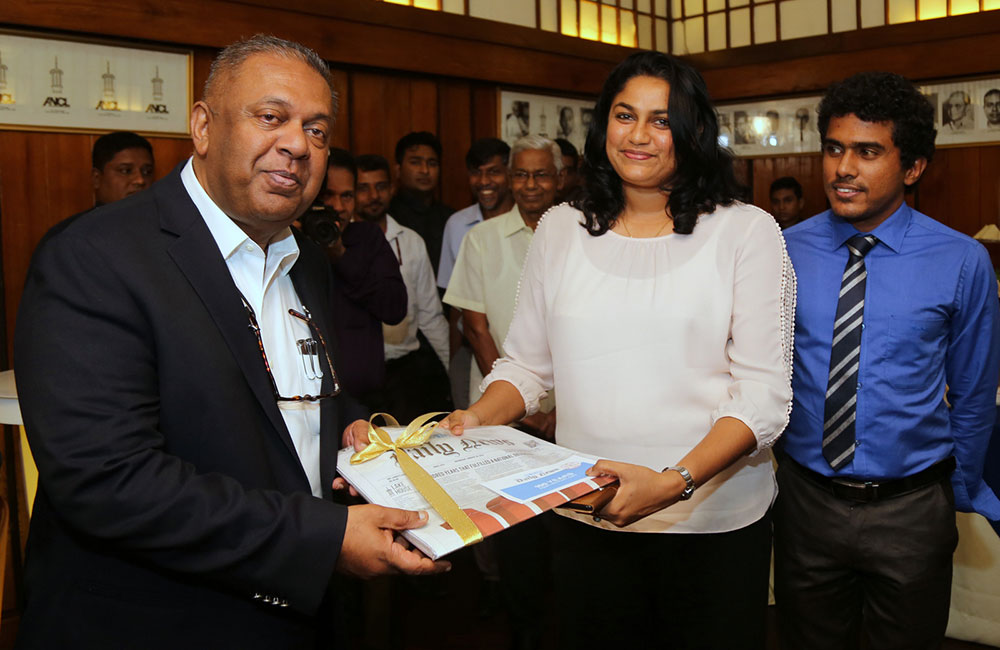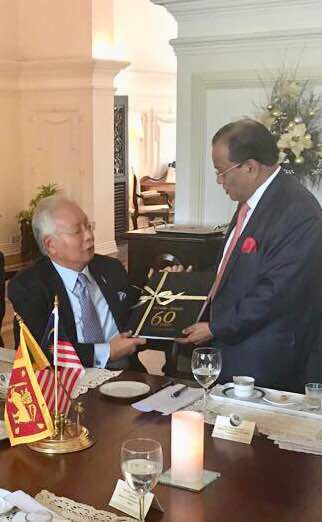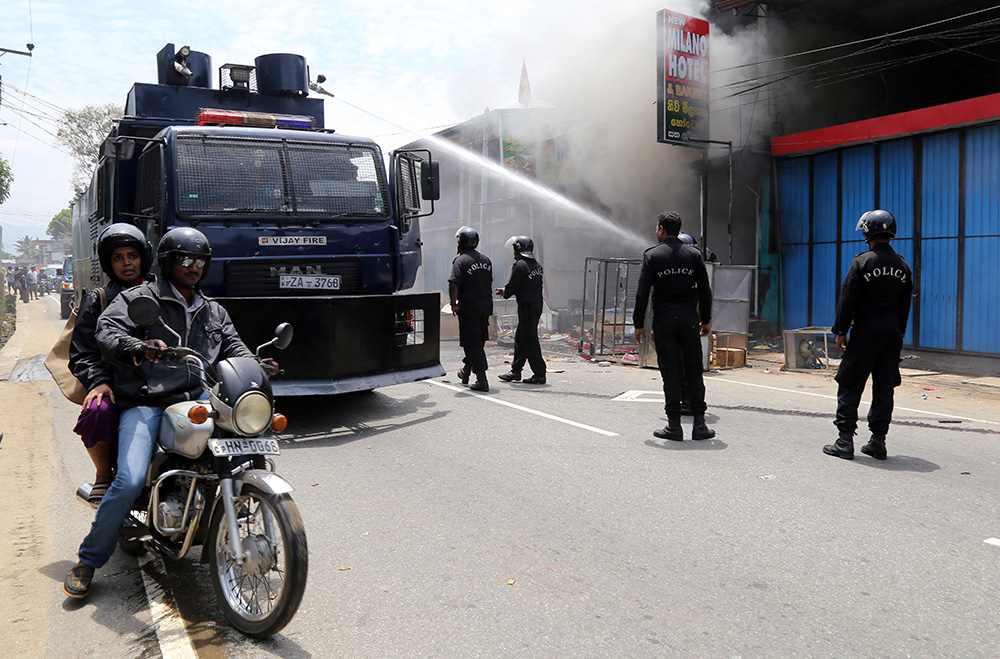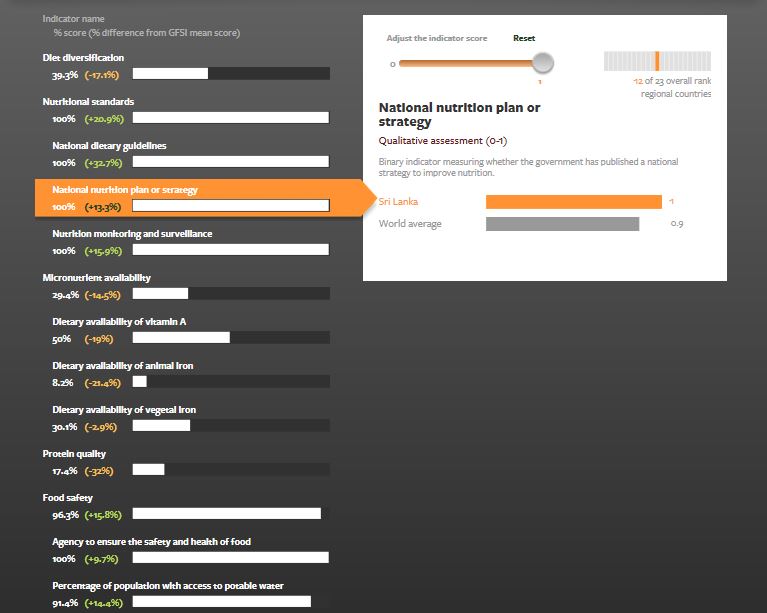Photo Story

2018 FIFA World Cup Trophy handed over to President
The 2018 FIFA World Cup Trophy arrived in Sri Lanka yesterday, and the trophy was handed over to President Maithripala Sirisena at the President’s House in Colombo, today.
The 2018 FIFA World Cup Trophy is scheduled to visit more than 54 countries around the globe, providing an opportunity to see the trophy in person for football fans.
Sri Lanka has been chosen as the first destination in its world tour.
According to the International Football Federation, apart from Sri Lanka, the trophy will be taken only to Pakistan and Maldives in South Asia.
The 2018 FIFA World Cup Trophy will keep at the BMICH today for the public view.
The 2018 FIFA World Cup to be held in Russia in June.
Sri Lanka’s official football team, Minister of Sports Dayasiri Jayasekara, President of the Football Federation of Sri Lanka, Anura De Silva and members of the Football Federation of Sri Lanka and Christian Karembeu of the 1998 World Cup winning football team of France participated in this event.
Source : President’s Media Division
https://english.newstube.lk/news/photo-story#sigProId10fd4fa085

Can elephants and humans co-exist in Sri Lanka?
Photos by Silvia Boccardi
On this small, densely populated island, clashes between elephants and humans are rapidly increasing. Rangers and villagers are working to find ways to avoid the conflict and the devastating, at times deadly, impacts on both sides.

Sri Lanka is a small island, but the population of wild elephants ranges from 2,500 to 4,000, making it the country with by far the highest density of elephants in the world. It is also the fifth for human density. Coexistence between humans and elephants is becoming rapidly more difficult every year. This coconut tree farmer in Kataragama had a quarter of his annual tree production uprooted by elephants in one night.

Most elephants do not live in reserves anymore because, during the 25-year-long civil war between Sinhalese and Tamil, many herds expanded into areas of conflict that men left abandoned. Now that those territories have been reallocated to the population and their agricultural needs, problems are on the rise,’ said Dr Prithiviraj Fernando, chairman of the Centre for Conservation and Research.

Sri Lanka is rich in tropical forests. But due to population growth, urbanisation, and the subsequent expansion into previously unspoiled areas, the elephants’ habitat is rapidly shrinking. Each year, about 150 wild elephants and more than 50 people are killed in clashes in Sri Lanka: similar figures to India, with a population of 1 billion inhabitants, 60 times that of Sri Lanka.

A few months ago, an elephant knocked down Chanandra’s kitchen wall with its head and ate all of her rice reserves. Elephants can smell rice from a great distance and now they know where to find it.

Treehouses allows villagers to sight elephants looking for cultivated fields so they are better able to prepare.
 At dusk, elephants get closer to villages in search of food.
At dusk, elephants get closer to villages in search of food.

Initially, attempts were made to fence the areas where animals lived, but vegetation and climate changes made it impossible to maintain them.

Electrified fences are currently the only viable method to keep
elephants away from houses and villages, and they do not harm the animals. But elephants can even learn to overcome this barrier, using their insulating tusks or a tree to cross the fence.

Wild elephants in Minneriya national park. Between August and September more than 300 gather here every day.

Men use bengalas – flares – to scare elephants away from the houses. They don’t always work though: hungry elephants are hard to scare and get easily used to this technique.

Rangers from the Department of Wildlife Conservation try to scare an elephant away by shooting bengalas. In the area around Galgamuwa, the houses and fields that border the jungle where the annual crops of rice, coconut and cucumber are kept are sometimes attacked more than once a day.

Elephants are one of Sri Lanka’s main tourist attractions but recent campaigns have called for an end to human interaction with the wild animals. In Transit Homes, elephants are kept for short periods of time for guests’ entertainment. Once they are released though, the animals are used to human contact and no longer fear people in the same way.

The Pinnawala elephant orphanage attraction has been flagged up by wildlife groups for animal welfare concerns. The cubs of elephants that are killed by villagers defending their fields are taken here, and at times elephants can be seen restrained with chains.

Buddhism is the most common religion in Sri Lanka. Elephants are not considered sacred, as they are in Hinduism, but many temples venerate the animal and they sometimes own one or two that they use in processions.

Fernando and his colleagues test GPS collars that help monitor herds’ movements.

Elephant footprints on artificial ‘corridors’ made to move herds away from habited areas.

Chandrika and Amita are sisters-in-law. Amita’s husband died seven years ago, while trying to scare an elephant out of his garden, and now the two families live off the salary of Chandrika’s son, who drives his tuk-tuk for tourists visiting Anuradhapura archaeological site.

An elephant eats on the roadside. Even in Sri Lanka, elephants don’t mind living with humans, and humans don’t mind living with elephants, except when the two species compete for the same territory and food reserves.

Daily New turns 100!
One of the oldest newspapers in Sri Lanka, the Ceylon Daily News turned 100 years on January 3. An event to mark the occasion was held at the Lake House under the auspices of Minister of Finance and Media Mangala Samaraweera. The pictures feature a few moments of the event held on the day.
https://english.newstube.lk/news/photo-story#sigProId2b24a70adb

Apolitical protest for democracy
Civil society groups and activists staged an apolitical protest at the Independence Square in Colombo on Monday evening (19), demanding that democracy is restored in the country.
Sri Lanka is currently in a political stalemate following the sacking of Ranil Wickremesinghe by President Maithripala Sirisena.
His actions have come under severe criticism from civil society and the international community for not adhering to democratic practices.






In a Nutshell: Sri Lanka Food Security
Despite being heavily reliant on food imports, Sri Lanka has been ranked the first in South Asian region on the recently published Global Food Security Index 2017. With a rank of 67, Sri Lanka are well ahead of regional peers India and Pakistan who are ranked at 74 and 77 respectively.
The Global Food Security Index considers the core issues of affordability, availability, and quality across a set of 113 countries. Sri Lanka has scored an impressive 100% on 'nutritional standards' and a rating of 96% on 'food safety'.
Here we take a look at Sri Lanka's performance in 2017 with regard to food security as researched by the intelligence unit of the 'The Economist' magazine.
Global Perspective

Monks for Democracy






Sri Lankan contribution to United Nations Peacekeeping
Sri Lanka first contributed to a United Nations peacekeeping mission in 1960, by deploying six peacekeepers to the United Nations Mission in the Democratic Republic of Congo (MONUC). Today, Sri Lanka is a member of the United Nations Special Committee on Peace Keeping Operations and is a committed partner with thousand men and women, from the three Armed Forces and the Police, deployed in missions abroad.
Over the years, Sri Lankan troops have served in Central African Republic, Congo, Cote d’Ivore, Haiti, Lebanon, Liberia, South Sudan, Timor and Western Sahara. Today, Sri Lanka is one of the highest Troop Contributing Countries (TCC) to the United Nations Peacekeeping Operations. Sri Lankan Peacekeepers Lance Corporal J. B. A. J. Jayasinghe (2005), Lance Corporal H. M. Wijesinghe (2005) and Lance Corporal A. Jayantha (2007) laid down their lives for international peacekeeping and were honoured with the Dag Hammarskjöld Medal.
A look back at Sri Lankan peacekeepers over the years...






9Army provides clean drinking water for 350 families in drought-hit Kilinochchi
Vijayabahu Infantry (VIR) troops of the 571 Brigade of the 57 Division in Baratheepuram under the Security Force Headquarters - Kilinochchi have extended their services to help locals who have been severely affected by the drought that has engulfed the Kilinochchi area.
Army water bowsers were deployed with the intention of filling roadside plastic tanks. More than 350 families as well as children from the Baratheepuram School and the Annaisaradha Kanista Vidyalaya have benefited from this initiative.
https://english.newstube.lk/news/photo-story#sigProIdf020f7cbef

Commemorative publication to celebrate 60 years of diplomatic friendship between Sri Lanka and Malaysia launched
A commemorative publication to celebrate 60 years of diplomatic friendship between Sri Lanka and Malaysia was launched at the official lunch hosted by Prime minister Ranil Wickremesinghe on December 13 at temple trees during the official visit of the Prime minister of Malaysia Najib Razak.
The picture shows A.J.M. Muzammil, High Commissioner of Sri Lanka in Malaysia presenting the commemorative publication to the Malaysian Prime Minister.
This is the first time a book capturing 60 years of Diplomatic friendship between the two countries has been released.


Elephant attacks safari jeep in Yala
A curious Asian elephant in hot pursuit behind a safari jeep as it speeds away in Sri Lanka's Yala National Park, March 27, 2018. Holidaymakers had a close call when a curious elephant poked its head into their safari jeep to look for food and nearly tipped the vehicle over. Wildlife photographer Sergey Savvi captured the startling encounter while on safari with his wife Julia. Savvi, 37, said: "It was terrifying and amazing at the same time."(Photo/VCG).




















